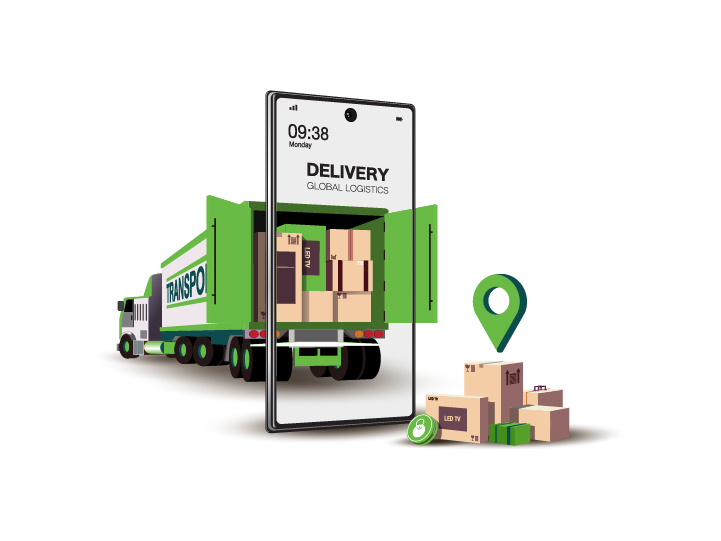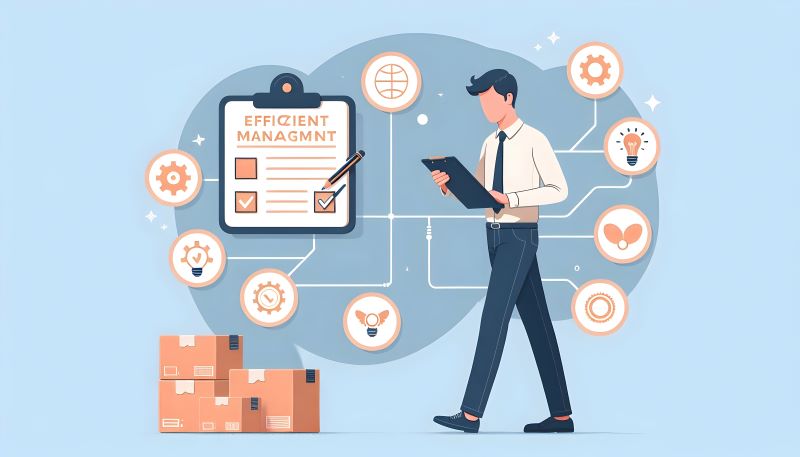Best Practices to Handle Returns in Omnichannel and Warehouse Management

The growing significance of returns management in e-commerce and omnichannel retail cannot be overstated. There are a couple of reasons for this rise including the advent of D2C models, the explosion of online marketplaces, and the complicated web of warehouse logistics. As online shopping continues to rise, modern consumers increasingly expect convenience and a hassle-free return process, making effective returns management more crucial than ever.
Efficient return processing is not just about the ability to process returns, it involves coordinating across multiple channels. For instance, D2C returns might differ compared to those coming through third-party marketplaces or from warehouse inventories. Each channel has unique requirements, such as different return policies, processing times, or inventory management strategies. This necessitates tailored workflows to meet the unique demands of each channel. To manage returns effectively, businesses must adapt their processes based on the specific characteristics of each channel. Ultimately, successful return management hinges on striking the right balance between operational efficiency and customer satisfaction—something that can be achieved through robust Omnichannel software solutions.
In this blog, we’ll examine e-commerce return rates, and provide top tips for handling returns, reducing their occurrence, and simplifying the process.

Effectively handle multi-channel return with Ginesys
Understanding the Returns Process in Omnichannel Retail
According to a report by the National Retail Federation, the merchandise return rate for 2023 was 14.5% of total sales. This means that for every $1 billion in sales, the average retailer incurs $145 million in merchandise returns. However, for e-commerce retailers, the rate is much higher. According to Shopify, the average return rate for e-commerce is between 20% and 30%. These figures emphasize the critical importance of Warehouse management software for e-commerce sellers seeking to optimize their returns. Having a third or a fifth of the products sold to be returned is a major driver of lost revenue, increased operational costs, and decreased profit margins. Another key benefit of WMS is its ability to efficiently manage product returns, which is essential for maintaining customer satisfaction and streamlining warehouse operations in omnichannel retail.
Why E-commerce Returns Are Costly
The costs of e-commerce returns are significant and contribute to the high cost. Unlike brick-and-mortar stores, where customers can inspect products before purchase, online shoppers rely on descriptions and images, often leading to mismatches between expectations and reality. This difference leads to an increase in the return rate for e-commerce transactions.
The costs associated with e-commerce returns can be multifaceted without a Returns management system:
- Logistics Costs: The expenses involved in handling, shipping, and restocking returned items can be substantial with additional shipping and handling costs.
- Inventory Management: Returns can disrupt inventory accuracy and complicate stock management, particularly if items are damaged or no longer in demand.
- Customer Service: Managing returns involves additional customer service resources to handle queries, process returns and provide refunds or exchanges.

Master omnichannel returns with Ginesys’ Omnichannel Retail Software
Challenges of Managing Omnichannel Returns
Product returns management presents a range of unique challenges. These challenges stem from the complexity of integrating multiple channels, maintaining regulatory compliance, and delivering a consistent customer experience. Here’s a closer look at some of the key difficulties involved:
- Complex Logistics: Handling returns across various channels—such as online, in-store, and through third-party sellers—can create significant logistical hurdles. Each channel may have different processes or requirements, leading to a tangled web of operations. Omnichannel returns must flow through multiple separate systems and partners to complete the returns journey. Keeping track of returns as they move across this complex infrastructure of systems and facilities is extremely challenging with disconnected workflows.
- Regulatory Compliance: The returns management system must navigate through regulatory requirements that change from region to region or product to product. Advocating compliance with local, national, and international regulations is crucial to avoid legal crosshairs and potential penalties. Regulations may include aspects like consumer rights, the length of return windows, or data protection. Maintaining compliance and consistent processes across these various channels and systems can become challenging.
- Increased Risk of Error or Lost Items: As items move through different channels and locations, tracking each returned item accurately becomes more challenging, increasing the likelihood of errors and lost items. Mislabeling, incorrect processing, and misplaced items can disrupt inventory management and financial reporting. This risk of errors or lost items can increase with multiple channels involved. Reasons for errors and lost items can be lack of standardization, visibility, and multiple intermediaries.
- Juggling Multiple Returns Policies: It can be challenging for a customer and staff to juggle between a 15-day return policy vs. a 30-day or no-return policy across different sales channels. Managing these varying policies can lead to inconsistencies in how returns are processed and refunded. For customers, it causes a state of confusion where they don't understand the return process of a particular channel, leading to frustration and dissatisfaction. Managing different return policies and procedures can be a challenge for retailers as well, requiring them to track and process returns differently for each channel.
- Inconsistent Customer Experiences: Managing omnichannel returns across multiple channels often leads to inconsistencies in how returns are handled. Consequently, customers might face distinct procedures, policies, or service levels when returning the item online. Such inconsistencies can create a negative brand image as customers expect seamless, unambiguous experiences when returning purchases.
- Inconsistent Inventory Tracking and Management: Returns may come from any source in an omnichannel environment, so it can be very difficult to keep the inventory updated in real-time. The merchant should be able to instantly update his inventory levels across all channels once a customer returns an item. The inconsistency in tracking the inventory leads to stockouts, overstock situations, and inaccuracies in the inventory data.
Addressing these challenges requires a comprehensive approach that integrates technology, processes, and policies. With Warehouse management software, businesses can better manage omnichannel returns and enhance both operational efficiency and customer satisfaction.
Strategies to Reduce E-commerce Returns
Effective Product returns management is crucial for reducing e-commerce returns and maintaining profitability with customer satisfaction. Here are several effective strategies:
- Accurate Product Descriptions: Clear, detailed descriptions of products go a long way in reducing the likelihood of return. A decent product description should contain information relating to the size, material, color, and functionality of the product. In addition, if potential questions and concerns are answered within the product description, this will help set realistic expectations for customers. Focus less on the marketing language, and more on what the product is and does, along with its best features.
- Improved Sizing Guides and Customer Reviews: Providing precise sizing guides and leveraging customer reviews can significantly decrease return rates. Precise sizing guides, that show measurements and information about the fit, will help customers select the correct size. Incorporating customer reviews and feedback into the shopping experience fosters greater trust and confidence among shoppers.
- Better Product Imagery: High-quality product images help set realistic consumer expectations, hence reducing returns. Provide multiple images from different angles and close-ups of important details. Showcase videos of products in use, highlighting their features. Make sure the imagery accurately represents what the product will look and feel like, including the color and texture, to reduce misconceptions and dissatisfaction.

Master returns to balance efficiency and customer satisfaction
10 Best Practices for Managing Returns in Omnichannel and Warehouse Operations
Managing e-commerce returns efficiently in a complex omnichannel environment requires a strategic approach that balances customer satisfaction with operational efficiency. Here are some best practices to optimize the returns process:
- Offer Multiple Return Options: Provide customers with various return options, such as in-store returns even for online purchases, mail returns, or drop-off points at partner locations. This flexibility enhances customer satisfaction and can reduce return processing times. The more diverse the options, the better the customer experience.
- Analyze Return Data: Regularly analyze return data to identify patterns and root causes of returns. Understanding trends, such as common reasons for returns or frequent return locations, helps in improving product quality and inventory management. Leveraging data and analytics is also critical to effectively manage high-volume omnichannel returns. To enhance returns through analytics businesses should identify issues, improve inventory management, clarify product details based on feedback, and optimize the customer experience.
- Optimize Reverse Logistics: With e-commerce returns coming from multiple purchase channels, reverse logistics becomes increasingly complex. Design an effective reverse logistics strategy to manage the movement of returned goods efficiently. This includes optimizing transportation routes, leveraging local distribution centers, automating processes, integrating inventory systems, tracking analytics, and minimizing handling costs. An efficient reverse logistics process helps reduce operational costs and turnaround time for returns.
- Have Real-Time Inventory Tracking: Utilize real-time inventory tracking to manage stock levels and update product availability accurately. This ensures that returned items are promptly added back to inventory, preventing overselling and maintaining accurate stock counts.
- Craft a Robust Returns Policy: According to an article by Amit RG of Richpanel, eight out of ten consumers read the returns policy before purchasing. Develop a clear, concise, and fair returns policy to help manage customer expectations and reduce confusion. Some areas to consider while formulating a returns policy are the return window, product conditions, original packaging, defining non-refundable products, and the cost of return for each product.
- Keep Customers Informed About Their Return Status: Maintain transparent communication with customers throughout the e-commerce returns process. Provide timely updates on the status of their return, including receipt confirmation, processing stages, and refunds or exchanges.
- Faster Return Processing: Streamline the return processing workflow to expedite handling times. Implement efficient sorting, inspection, and restocking procedures to minimize delays and ensure that returned items are processed quickly. This leads to faster refunds or exchanges for customers.
- Offer Product Exchanges: One of the cleverest ways to reduce refunds is to offer customers exchanges. Instead of only providing refunds, offer customers the option to exchange products. This can help retain revenue and customer loyalty, as customers might prefer to exchange a returned item rather than receive a refund. Refunds lead to losses due to shipping costs for returns, potential unsellability of returned products, and the time and resources required for processing.
- Implement Omnichannel and Warehouse Management Software: Investing in such software helps in integrating and streamlining returns across various sales channels. This technology ensures accurate tracking, efficient processing, and a seamless return experience by consolidating data and automating workflows.
- Improved Customer Communication: Customer communication is delicate when handling a return or refund, as the customer may be frustrated. Enhance overall customer communication by training staff to handle returns professionally and empathetically. Providing exceptional customer service during the return process can positively impact customer satisfaction and encourage repeat business.
By integrating these best practices into the omnichannel and warehouse operations, businesses can create a more efficient, customer-friendly return process that supports both operational goals and customer satisfaction.

Ginesys transforms efficiency and customer satisfaction in return flow management
Role of Omnichannel and Warehouse Management Software
Omnichannel and Warehouse management software play critical roles in effectively managing returns across various sales channels that enhances customer experience and operational efficiency:
- Omnichannel Software: It provides a unified view of inventory and sales across all channels, enabling seamless returns management. The software allows customers to return items through the preferred channel of the retailer and the customer. By consolidating return data, it helps retailers understand return patterns, optimize return policies, and improve customer satisfaction.
- WMS: It supports the accurate processing of returns by tracking items throughout the return journey, from arrival to inspection and restocking. Effective WMS can automate return workflows, ensure inventory accuracy, and facilitate faster processing of returns. This minimizes disruptions to warehouse operations and improves overall efficiency.

The Role of Ginesys’ Omnichannel and Warehouse Management Software in Streamlining Returns
Omnichannel and Warehouse Management Software by Ginesys One stands as a comprehensive solution that helps sellers automate every aspect of their returns management workflow. It provides innovative solutions that simplify the returns process, benefiting both retailers and customers.
Here are some of the key benefits of managing returns effectively:
- Real-Time Tracking of Returns Across Channels: Ginesys One integrates with reverse logistics and courier aggregators via its OMS, Browntape to provide a seamless visibility into return status across all sales channels, allowing businesses to monitor and manage returns in real-time. This ensures that any issues are promptly addressed, minimizing delays.
- Centralized Data for Better Decision-Making: By consolidating return data from various sources into a single platform, the software empowers businesses with comprehensive insights. This centralized approach facilitates more informed decision-making and helps in identifying patterns or recurring issues.
- Enhanced Customer Experience: It streamlines the returns process, making it faster and more accurate. This efficiency translates into quicker refunds and exchanges, leading to increased customer satisfaction and loyalty.
Advantages of Ginesys Omnichannel and Warehouse Management software in handling returns
Handling returns efficiently is a critical component for maintaining operational efficiency in a retail environment. The Omnichannel software and WMS offer several key advantages in managing returns effectively:
- Automation of Verification and Inward Processing: The software streamlines the returns process by automating the verification and inward processing steps. This automation reduces manual intervention, speeding up the processing time and minimizing human errors. With automated verification, returned items are quickly assessed for their condition, allowing for prompt updates to inventory records.
- Improved Inventory Accuracy and Reduced Errors: Accurate inventory management is crucial for any retail operation. Ginesys One enhances inventory accuracy by integrating returns data directly into the inventory management system. This integration helps ensure that stock levels are updated in real time, reducing discrepancies between actual stock and recorded inventory. This also helps in minimizing errors related to stock counts, thereby preventing issues such as overstocking or stockouts.
- Seamless Integration with Other Business Systems: OMS for returns management is designed to integrate seamlessly with other business systems such as ERP and CRM. This integration allows for a cohesive approach to managing returns across different aspects of the business. The holistic view provided with the help of ERP and CRM enhances decision-making and improves overall operational efficiency.

Streamlining returns with Ginesys: Efficiency, accuracy, automation
Final thoughts: Omnichannel Returns are the Future of Shopping
As consumer expectations evolve and the retail sector becomes increasingly competitive, managing returns with precision can significantly impact a business's profitability. By implementing Omnichannel and Warehouse Management Software, companies can minimize costs, enhance operational efficiency, and strengthen customer loyalty.
Ginesys One offers a comprehensive suite of solutions designed to streamline returns management across omnichannel and warehouses. With its integrated features, the software facilitates seamless returns processing, automates workflows, and provides valuable insights for continuous improvement.
Transform omnichannel returns from a liability into a true competitive advantage – contact us today to get started.
